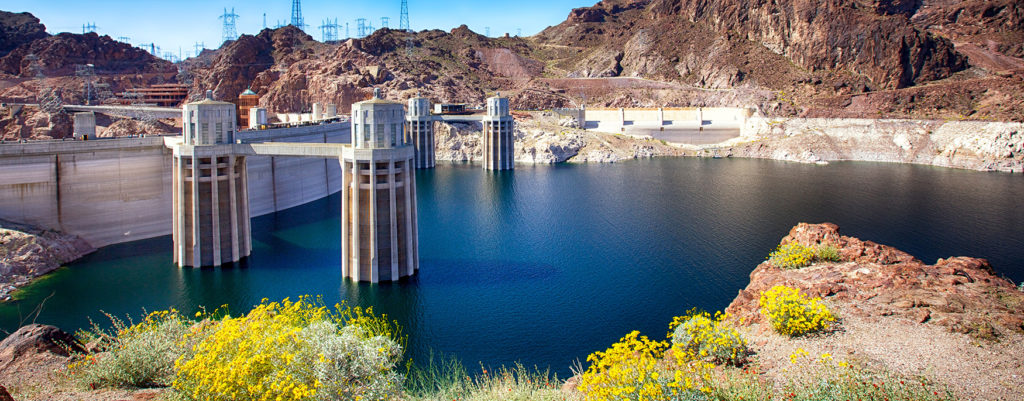Stanford’s Buzz Thompson on Colorado River Deal and Ongoing Challenges
On May 22, a tentative deal to reduce water use by entities drawing from the Colorado River was reached, averting near-term potential disaster and predictions that the river could all but stop. While still pending federal approval, the deal marks a breakthrough in fraught negotiations for water in the drought-stricken region. Here, Professor Buzz Thompson, a global expert on water and natural resources who has served as Special Master for the United States Supreme Court in Montana v. Wyoming, discusses the agreement—and challenges still facing the millions of people, creatures, plants, and ecosystems that depend on the Colorado for water. [Thompson represents an entity that owns Colorado River water rights.]

How important is the Colorado River?
The Colorado River is the life blood of the Southwest United States. Although it pales in size compared to the Mississippi and Ohio, it is the principal source of water for the seven states through which it runs—Colorado, New Mexico, Utah, and Wyoming (the Upper Basin states) and Arizona, California, and Nevada (the Lower Basin). Most of the water goes to support these state’s agricultural sectors, but the river also supplies critical water to Denver, Las Vegas, Los Angeles, Phoenix, San Diego, and Tucson.
How dire is the situation with water in the Colorado River? Was there a real risk that the river would go dry? It was reported the water levels in Lake Mead and Lake Powell, two important reservoirs along the river, fell so low that the production of hydro power was threatened.

The Colorado River suffers from a severe “structural deficit.” Water rights exceed the available water. When Herbert Hoover led negotiations to divide the river’s water in 1922, he and others assumed that the river’s flow in an average year was about 18 million acre-feet (An acre foot is enough water to meet the yearly needs of two to three households in the western U.S.). The resulting Colorado River Compact therefore assigned 7.5 million acre-feet each to the Upper Basin and Lower Basin states. A subsequent treaty awarded Mexico another 1.5 million acre-feet. Local Indian tribes also hold large rights that have yet to be fully quantified. Those allocations might have been fine if there was really 18 million acre-feet of water in the river. In the second half of the 20th century, however, the river’s average annual flow was only about 14.5 million acre-feet. The Colorado River Basin has been suffering from a drought since 2000, bringing its average flow down to only 12 million acre-feet. Scientists predict that, with climate change, the river’s flow will drop even further.
Even though demand now far outstrips supply, the Southwest was never in immediate danger of running out of water. Instead, water users have been drawing down on the water stored in the two major federal reservoirs on the river—Lake Mead and Lake Powell. Both reservoirs now hold less than 30 percent of their capacity and, until the high snowfall of this year, have been shrinking rapidly. At the end of last year, the federal government worried that reservoir levels might soon drop below the “minimum power-pool level,” preventing the dams from producing the hydroelectric energy that is a major source of electricity in the Southwest. There was also a risk that, in the not-too-distant future, the reservoirs would drop below “dead pool” levels, which are the levels below which the dams cannot release the water that is stored.
For background on the water ongoing water crisis, go to Water in the West
What is the most important aspect of the new agreement?
The new agreement, which the federal government still needs to evaluate and accept, is important in three different ways. First, Arizona, California, and Nevada all signed on the bottom line. In recent months, the states have been at loggerheads over how to reduce water diversions on the river to more sustainable levels. California claimed the stronger legal argument because it had the more senior water rights, while Arizona and Nevada claimed the stronger equitable argument because its domestic users are more reliant on the river. Agreement among the three Lower Basin states is therefore all by itself a major accomplishment.
Second, the agreement provides for voluntary reductions. The federal government had said that it would unilaterally cut diversions by the Lower Basin states if needed. In the agreement, however, the states voluntarily agree to take necessary short-term cuts, avoiding the need for immediate federal regulatory action. The states have grabbed control of their own destiny, rather than leaving it up to federal officials thousands of miles away.
Third, the agreement provides that the federal government will compensate both tribes and agricultural regions for water reductions. The tribes and agricultural water users hold the senior water rights on the river, so they rightfully should receive payments for reducing their water use. Congress provided $4 billion in the Infrastructure Reduction Act to help reduce Colorado River consumption, and the agreement contemplates that the federal government would use this funding to compensate for the reductions.
Will all parties share in the pain of reducing their take of water, if the deal goes through?
All three Lower Basin states would reduce their water use. California would cut its water use the most, but it also has the largest share of Colorado River rights. The Upper Basin states would not make any contribution, but they have argued from the outset that they should not have to take a cut because they already use less than the Lower Basin. No one expected that the Upper Basin would offer to make any cuts.
Because the agreement contemplates that the federal government would compensate for some of the cuts, federal taxpayers would also be sharing the pain. Some have questioned whether the federal government should be contributing at all toward solving the problem. The major beneficiaries of the agreement are the urban areas of the Lower Basin who have the most junior water rights and could lose water if the available supply were apportioned by seniority. In the eyes of critics, these urban areas, not the federal government, should be paying for the needed compensation.
How important is the history of water rights in this situation?
History is always critical when you talk about western water rights. Agricultural users in California and Arizona were the first American settlers to divert water from the Colorado River and thus hold the most senior rights. Indian tribes, of course, were the first inhabitants of the region, and the U.S. Supreme Court long ago recognized that they are therefore entitled to senior water rights dating back to the creation of their reservations. These legal claims gave them a strong hand in negotiations with other water users and the federal government.
What do you think needs to happen for a long-term solution?
The current agreement, if accepted by the federal government, will solve the water imbalance only for the next three years. In the longer run, Colorado River users have to permanently retire water rights in order to balance supply and demand. This can be done in several ways. Urban areas could pay agricultural users to permanently reduce their water use. The federal government could pay them to do that. Or the federal government could order needed water reductions. The last option would almost certainly result in a federal lawsuit, perhaps before the U.S. Supreme Court. The second option would again raise the question of whether federal taxpayers should be subsidizing a solution.
Under all of these options, agricultural production in the Southwest will almost certainly shrink. Balancing the Colorado River will inevitably require an economic restructuring of the region away from agriculture. This will be a painful transition, and it is the issue that no one has been discussing. The U.S. has never done a good job minimizing the impact of economic transitions, whether it be the transition in the 1990s away from timber cutting or the current transition today away from coal mining. The federal government needs to begin thinking now about how it can help the Southwest transition away from agriculture and toward other economic options, such as renewable energy.
Does this agreement give you reason to be optimistic?
The agreement gives me more optimism than I had a month ago. The Colorado River states have always come together in the past to deal with the water challenges that they faced. They have now demonstrated that they can do it again. A permanent solution, however, will be much harder to reach than a temporary agreement.
There are also other challenges that the current agreement does not address. The Colorado River, for example, has not naturally reached its historic terminus, the Sea of Cortez, for over 35 years. Instead, the River peters out shortly after crossing the border into Mexico. The focus of this agreement has been meeting human needs, not the needs of the environment. To restore the river and ensure a sustainable future for the Region, governments will need to determine not only how to meet the needs of local cities and farms but also the environment. This will require collaboration not only among the Colorado River states, but also with Mexico.
A global expert on water and natural resources, Barton “Buzz” Thompson, JD/MBA ’76 (BA ’72) focuses on how to improve resource management through legal, institutional, and technological innovation. He is the author of the forthcoming book Liquid Asset: How the Private Sector Can Work with Government to Solve our Freshwater Crisis. He was the founding Perry L. McCarty Director of the Stanford Woods Institute for the Environment, where he remains a Senior Fellow and directs the Water in the West program. He also has been a Senior Fellow (by courtesy) at Stanford’s Freeman-Spogli Institute for International Studies, and a visiting fellow at the Hoover Institution. He founded the law school’s Environmental and Natural Resources Program. He also is a faculty member in Stanford’s Emmett Interdisciplinary Program in Environment and Resources (E-IPER). Professor Thompson served as Special Master for the United States Supreme Court in Montana v. Wyoming, an interstate water dispute involving the Yellowstone River system. He also is a former member of the Science Advisory Board of the United States Environmental Protection Agency. He chairs the boards of the Resources Legacy Fund and the Stanford Habitat Conservation Board, is a California trustee of The Nature Conservancy, and is a board member of the American Farmland Trust, the Sonoran Institute, and the Santa Lucia Conservancy.
